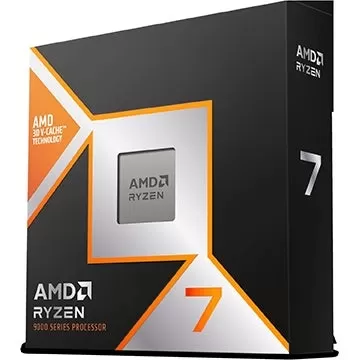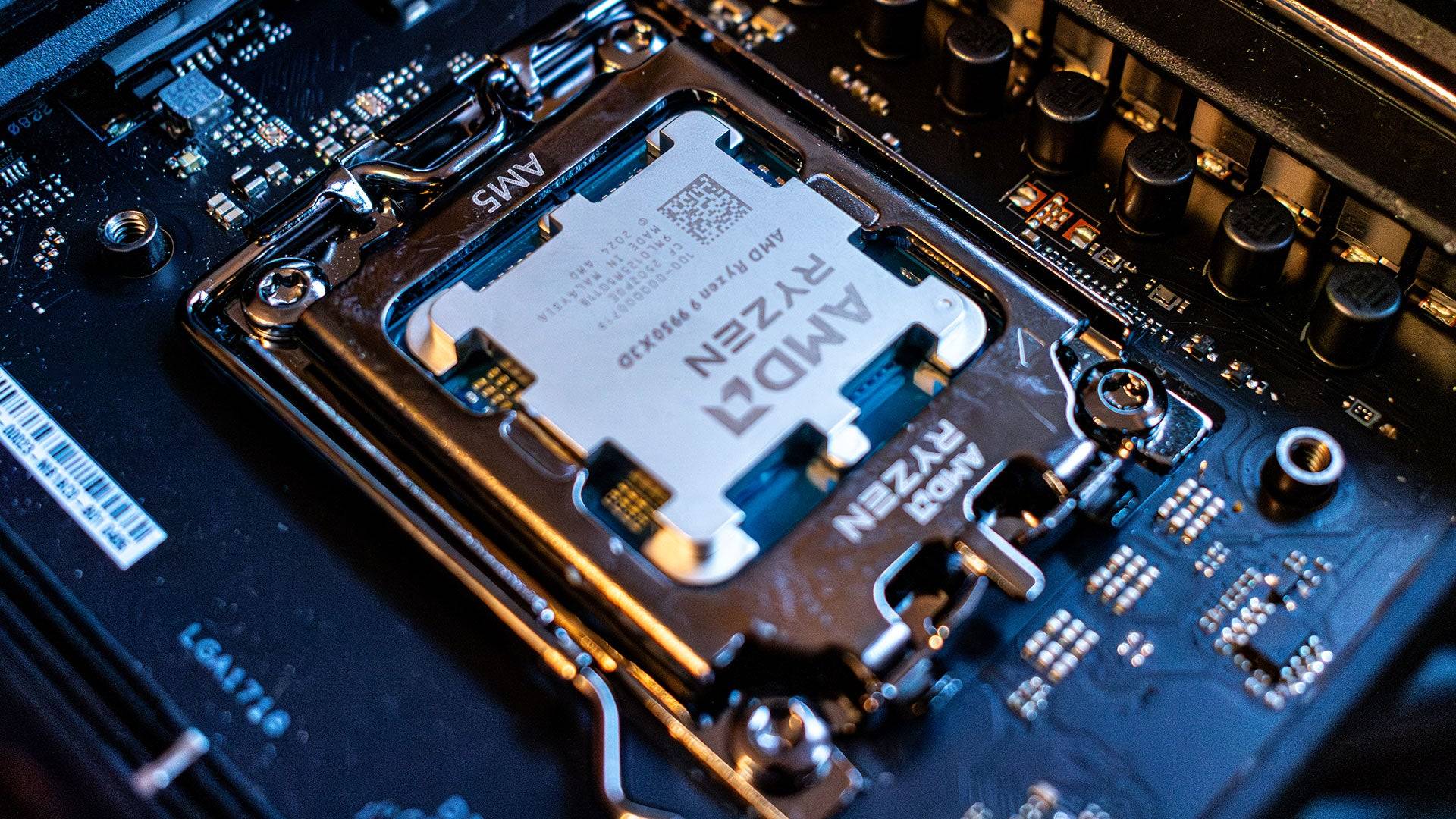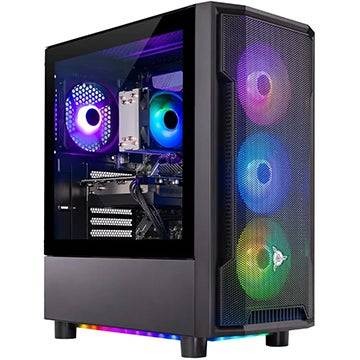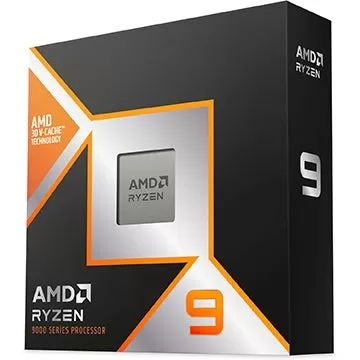The AMD Radeon RX 9070 enters the market at a curious juncture for graphics cards, following closely on the heels of Nvidia's latest generation. Priced at $549, this card directly challenges the underwhelming GeForce RTX 5070, giving AMD a clear edge in this competitive landscape, making the Radeon RX 9070 a compelling choice for 1440p gaming enthusiasts.
However, the situation is more nuanced due to AMD's own product lineup. The Radeon RX 9070 is only $50 less than the superior Radeon RX 9070 XT. While the 9070 is approximately 8% slower and 9% cheaper than the 9070 XT, the small price gap might tempt buyers to opt for the higher-performing model. Nevertheless, choosing between these two AMD options still positions gamers favorably within Team Red's offerings.
Purchasing Guide
The AMD Radeon RX 9070 is set to launch on March 6, starting at $549. Be aware that there will likely be various models at higher price points. My recommendation is to seek out a model as close to the base price as possible, especially given its proximity to the Radeon RX 9070 XT's pricing.
AMD Radeon RX 9070 – Photos
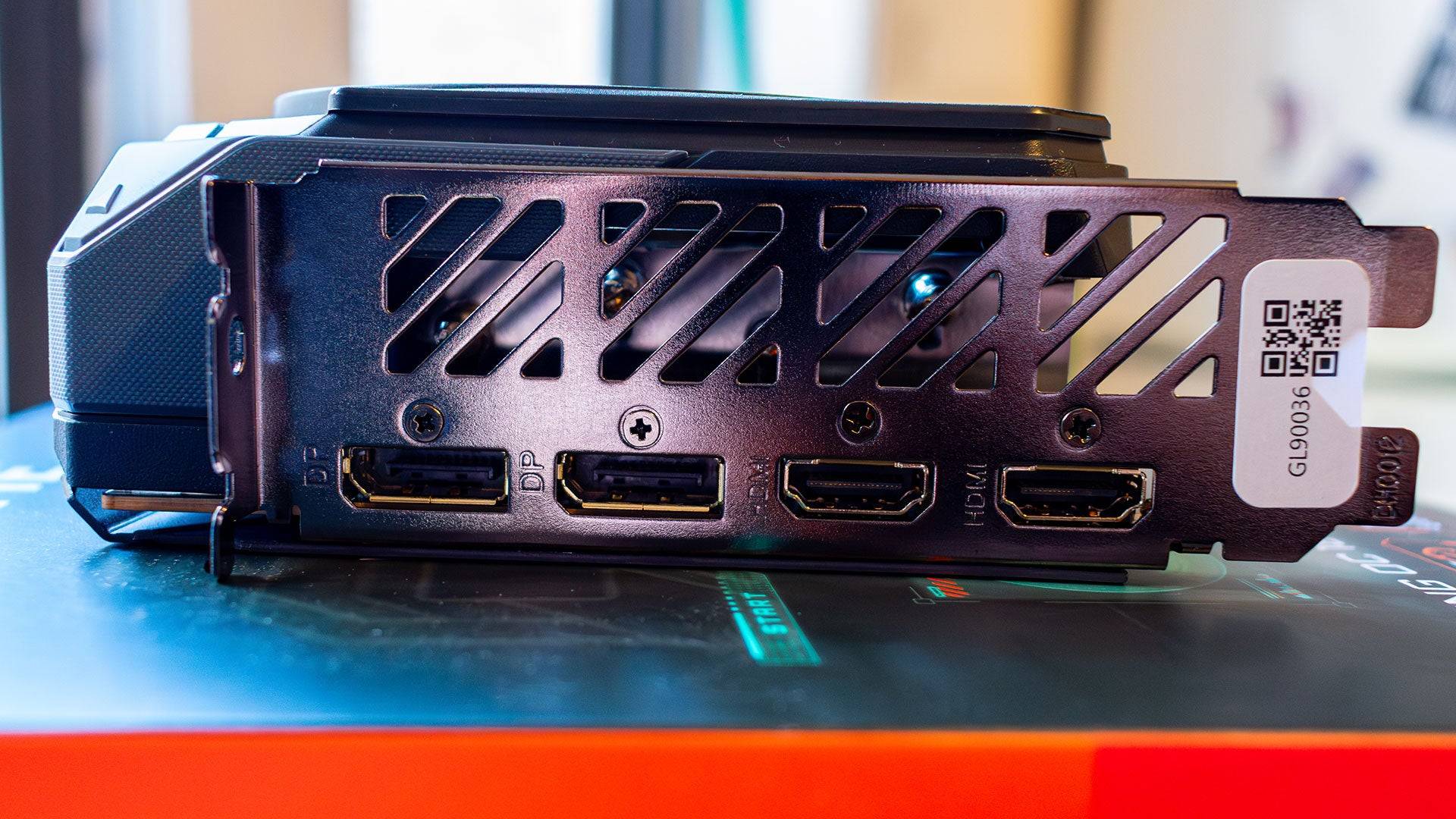
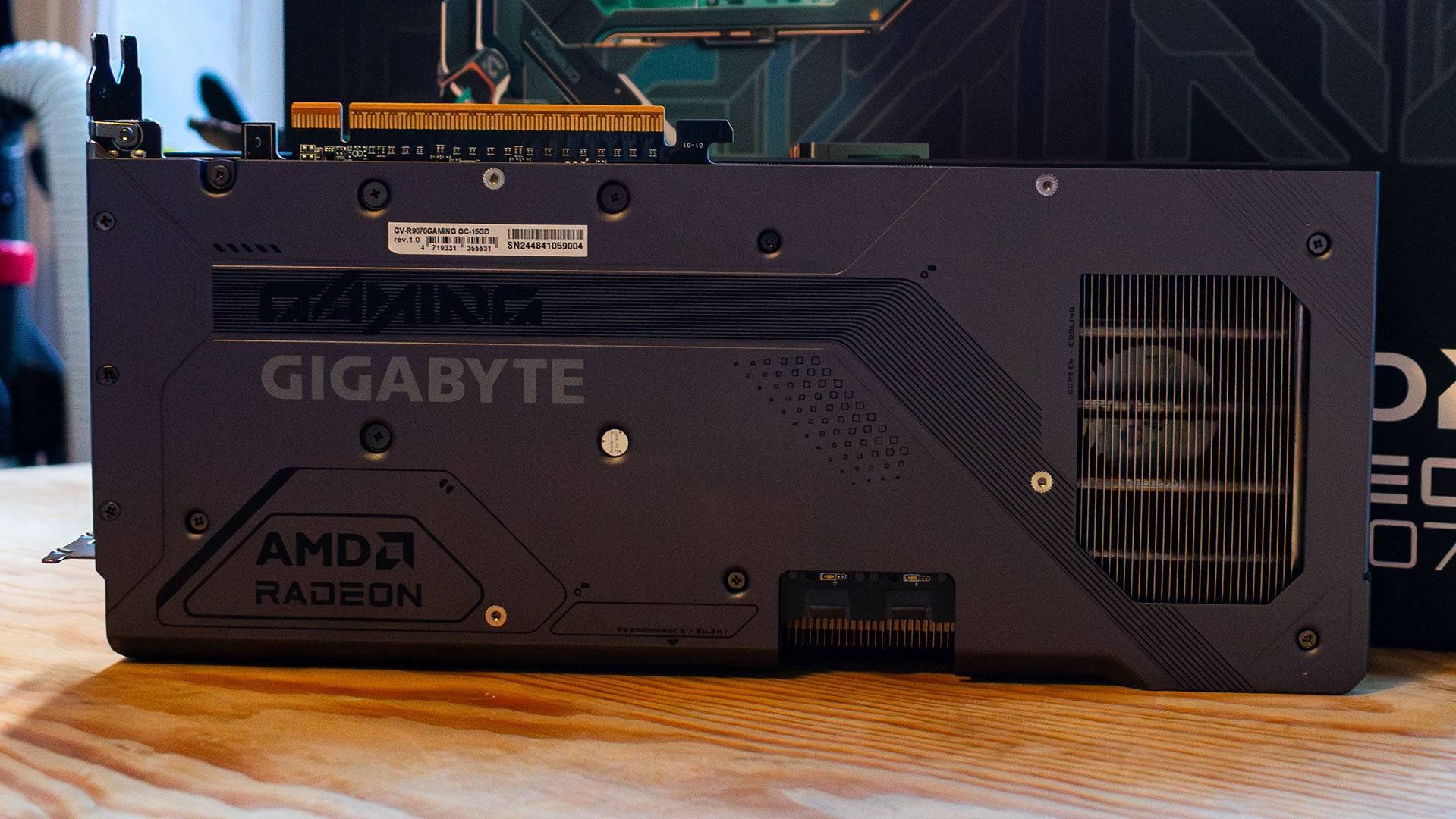 4 Images
4 Images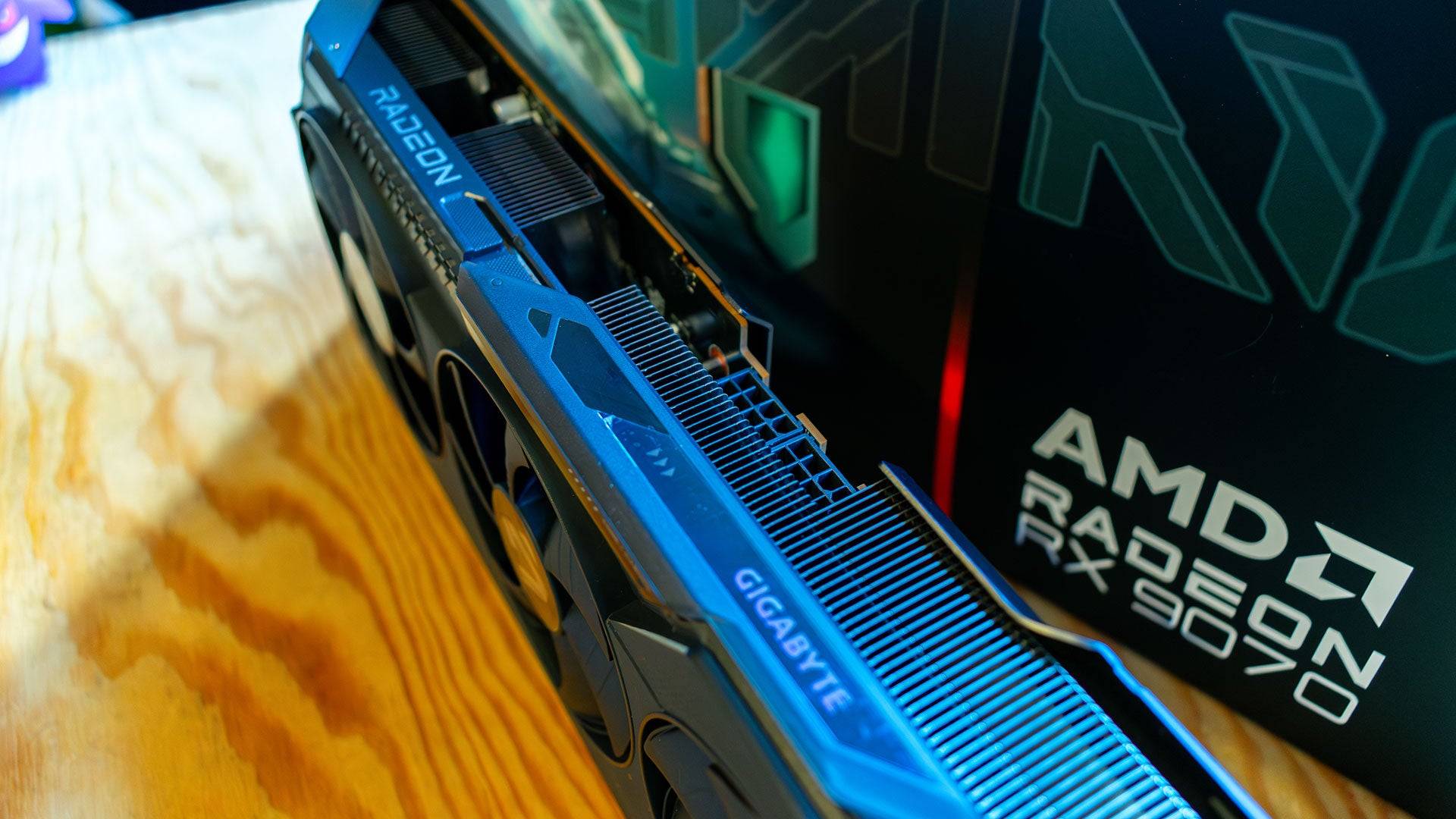
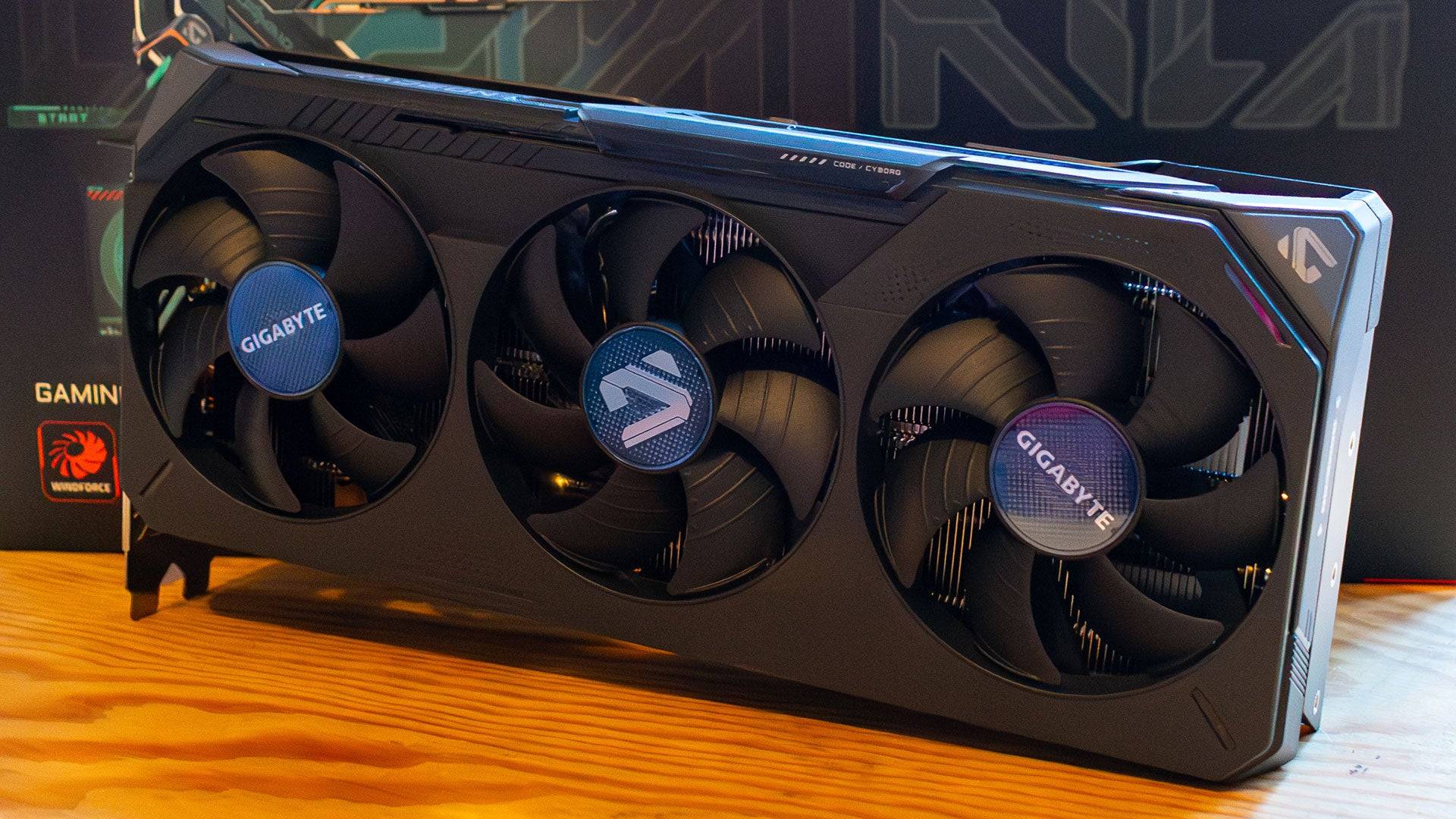
Specs and Features
The RX 9070, like its XT sibling, leverages the new RDNA 4 graphics architecture, which significantly enhances performance. Despite having 30% fewer compute units than its predecessor, the Radeon RX 7900 GRE, the 9070 still delivers superior performance.
This card features 56 Compute Units, each with 64 Streaming Multiprocessors (SMs), totaling 3,584 shaders. It also includes one Ray Accelerator and two AI Accelerators per compute unit, amounting to 56 and 112 respectively. These enhancements bolster the RX 9070's ray tracing capabilities and introduce AMD's FidelityFX Super Resolution (FSR) 4, marking the debut of AI upscaling on AMD GPUs.
The RX 9070 comes with 16GB of GDDR6 VRAM on a 256-bit bus, similar to the 7900 GRE, ensuring robust performance for 1440p gaming in the foreseeable future. Although GDDR7 would have been a welcome upgrade, it would likely have increased the price. AMD suggests a 550W power supply, though my testing showed a peak consumption of 249W, recommending at least a 600W PSU for safety.
Notably, AMD isn't releasing a reference design for the RX 9070, leaving third-party manufacturers to fill the market. I tested the Gigabyte Radeon RX 9070 Gaming OC 16G, a triple-slot card with a slight factory overclock.
FSR4
Since the advent of DLSS in 2018, AI upscaling has been a key method for boosting performance while maintaining image quality, predominantly on Nvidia GPUs. FSR 4 changes this landscape by bringing AI upscaling to AMD GPUs, using an AI model to upscale lower resolution images to native resolution. While this method can introduce slight performance losses compared to FSR 3, it offers better image quality with fewer artifacts.
For instance, in Call of Duty: Black Ops 6 at 1440p on the Extreme preset, FSR 3 achieves 165 fps, dropping to 159 fps with FSR 4. Similarly, in Monster Hunter Wilds at 4K with ray tracing, the RX 9070 gets 81 fps with FSR 3, but 76 fps with FSR 4. The Adrenalin software allows users to toggle between FSR 3 and FSR 4, catering to preferences for either performance or image quality.
AMD Radeon RX 9070 XT & 9070 – Benchmarks
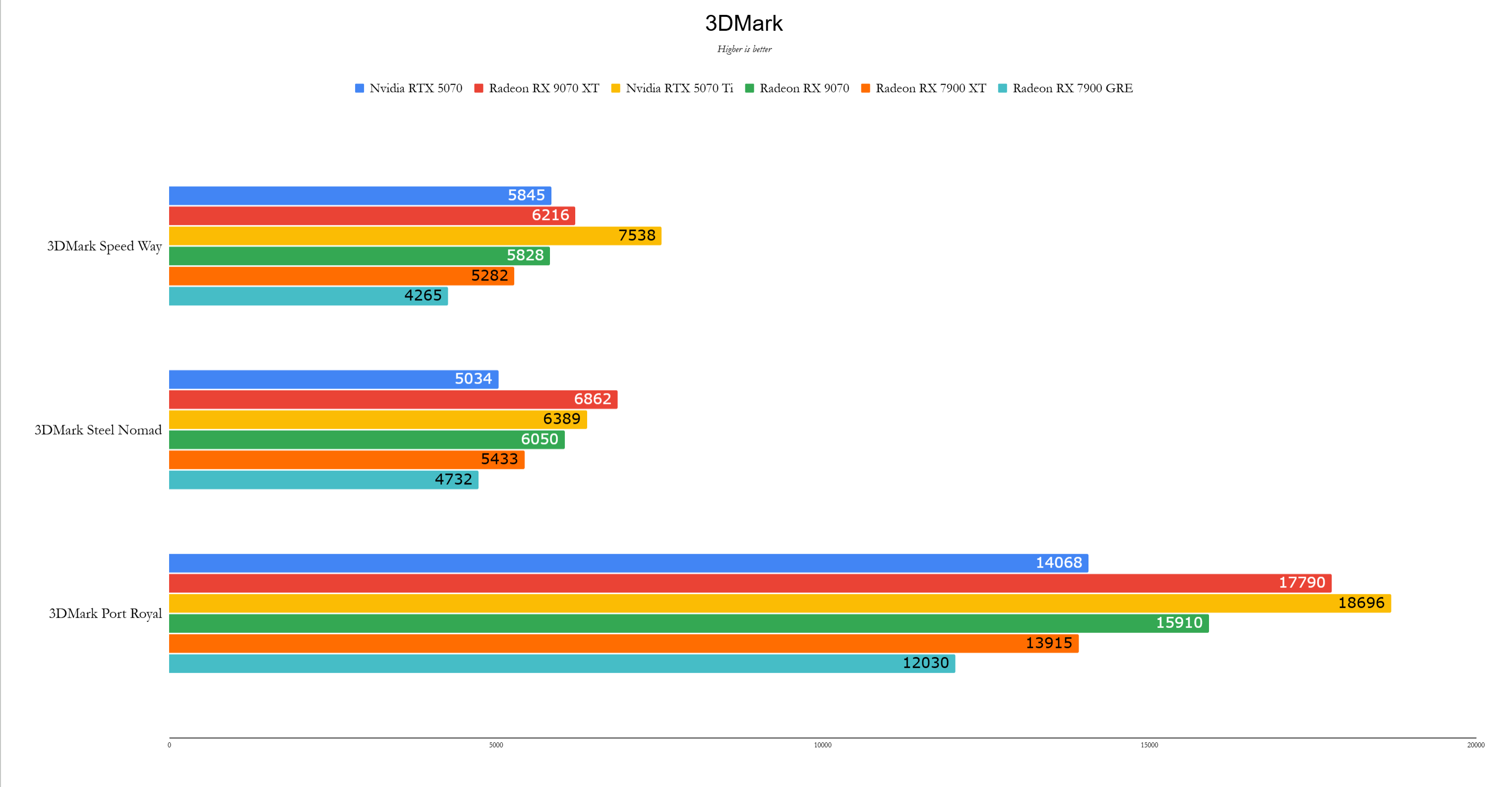
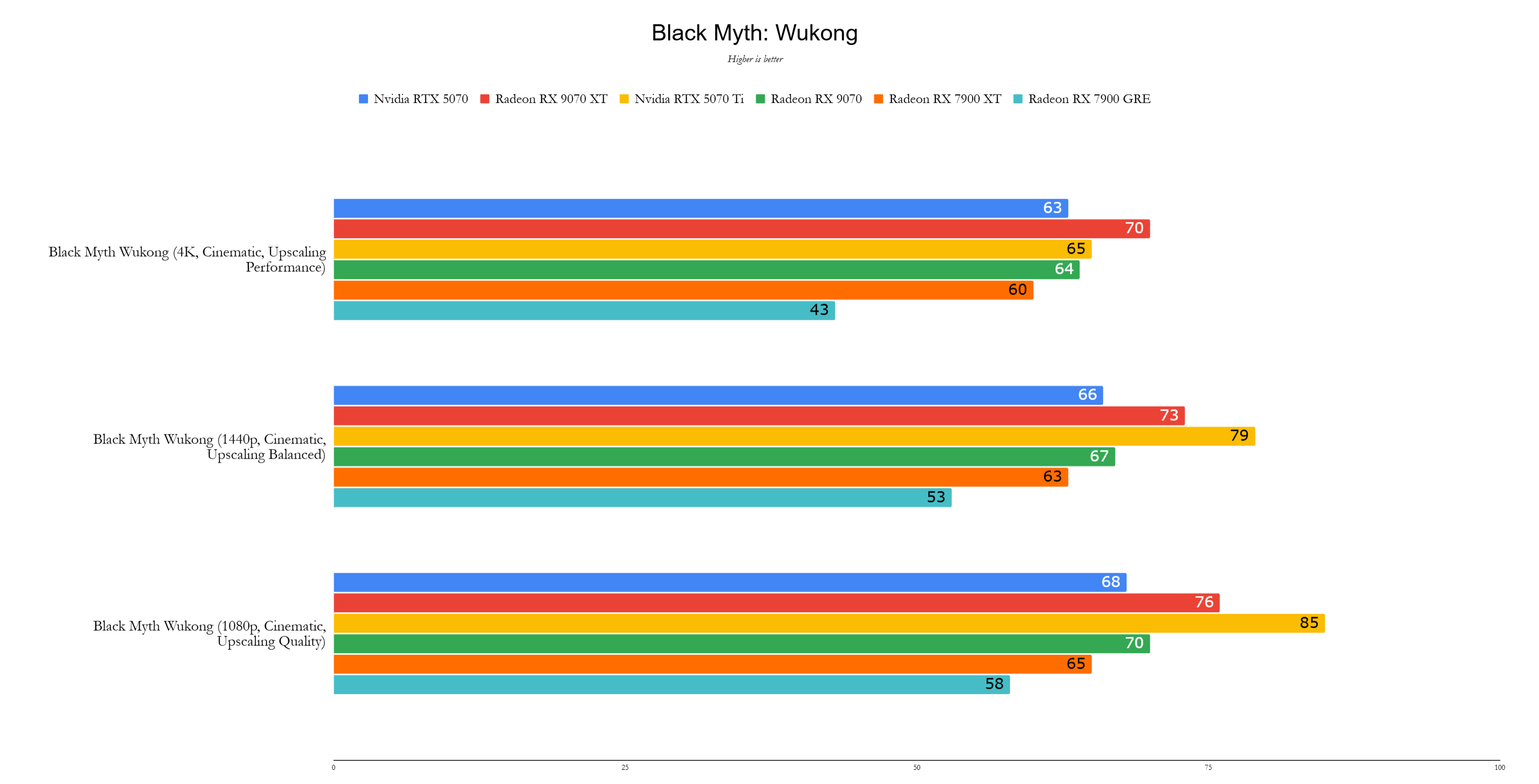 11 Images
11 Images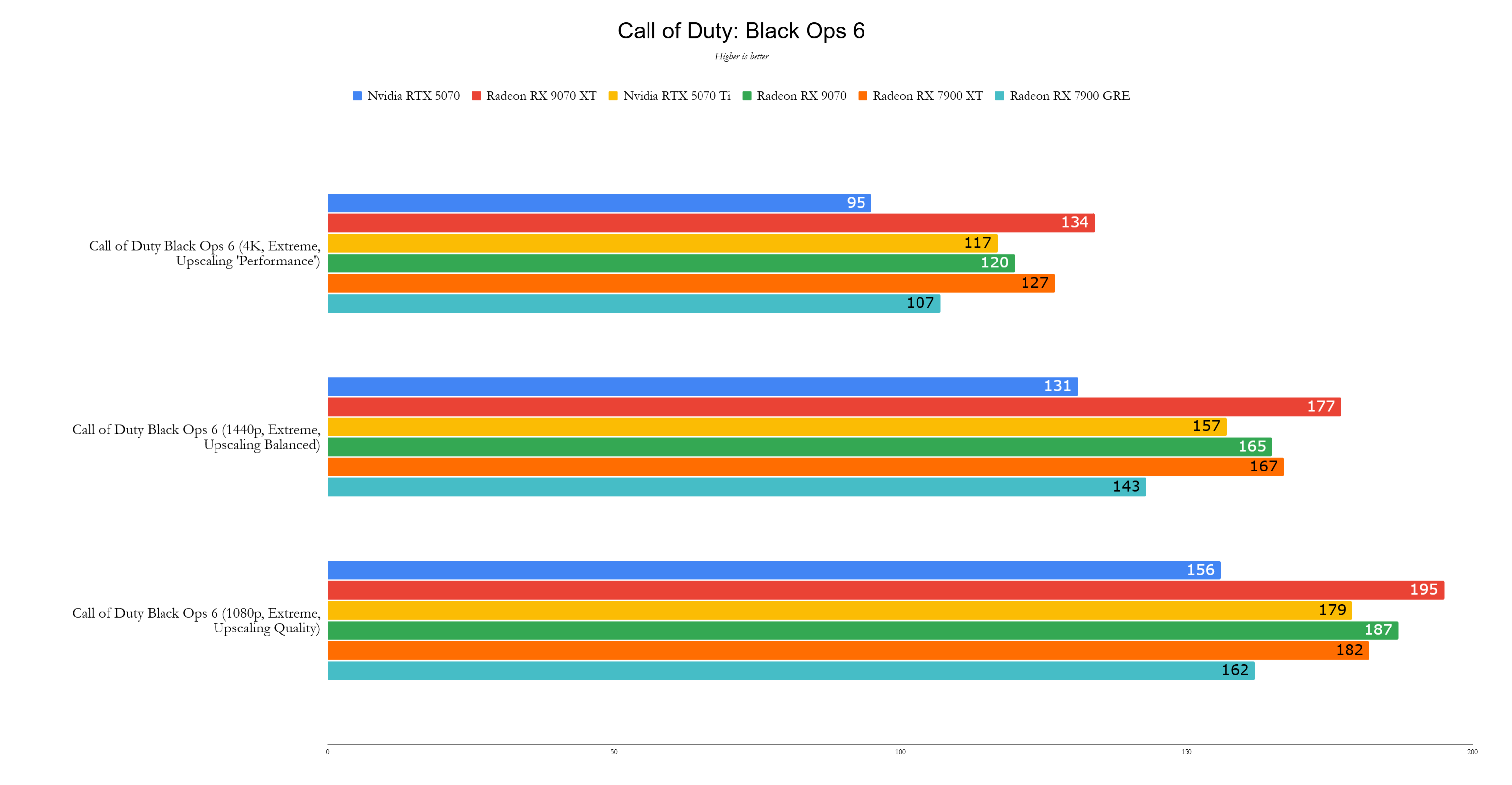
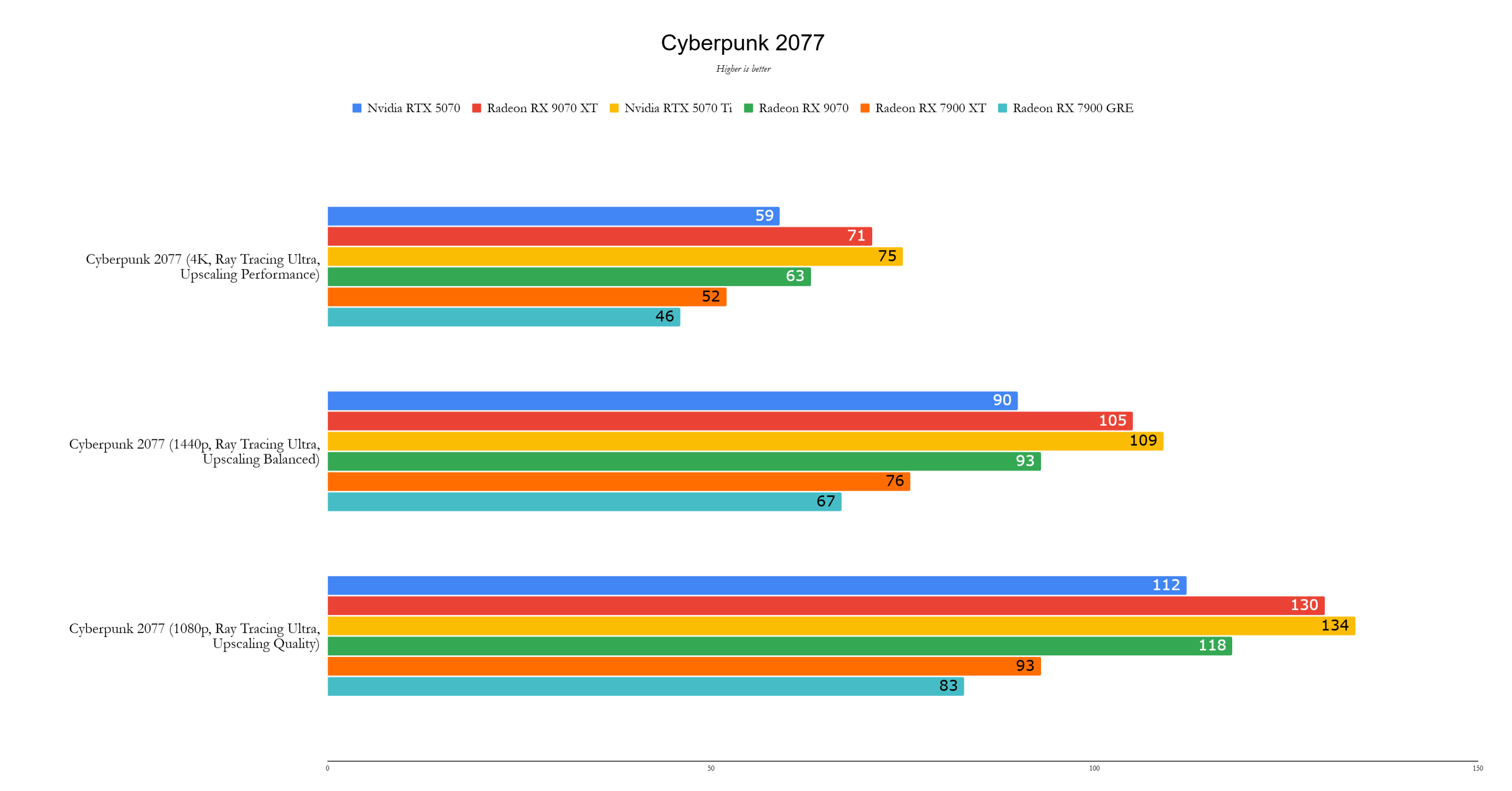

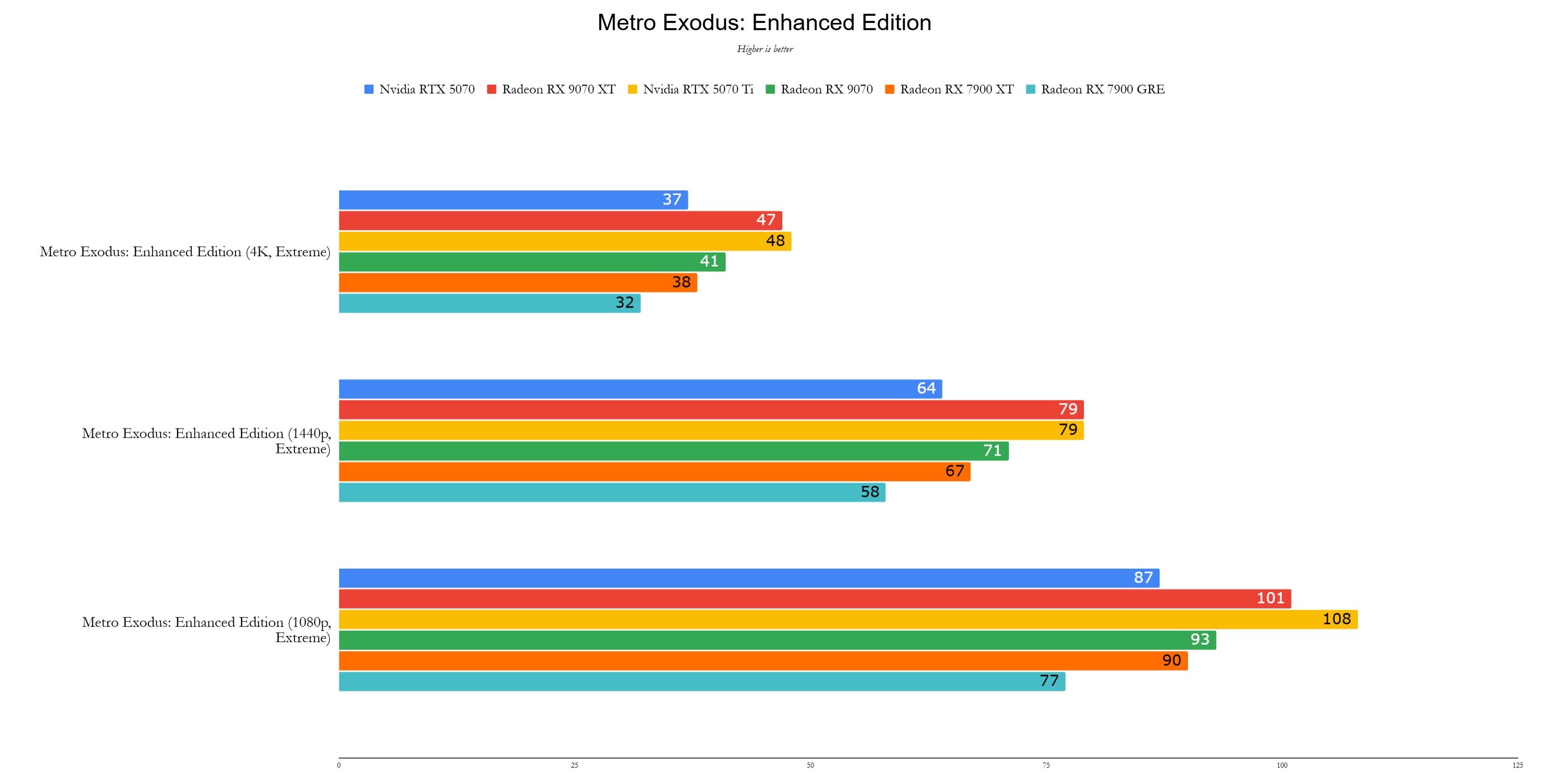
Performance
Priced at $549, the AMD Radeon RX 9070 outperforms the Nvidia GeForce RTX 5070 by an average of 12% at 1440p, and boasts a 22% lead over its predecessor, the RX 7900 GRE. The tested model, the Gigabyte Radeon RX 9070 Gaming OC, features a slight factory overclock, boosting performance by around 4-5%.
All tests were conducted with the latest public drivers at the time of writing: Nvidia cards on Game Ready driver 572.60, AMD cards on Adrenalin 24.12.1, with the RX 9070 and 9070 XT tested on review drivers from AMD.
In 3DMark, the RX 9070 closely matches the RTX 5070 in Speed Way with ray tracing, but significantly outpaces it in Steel Nomad without ray tracing, showcasing a 20% performance advantage.
Test System
- CPU: AMD Ryzen 7 9800X3D
- Motherboard: Asus ROG Crosshair X870E Hero
- RAM: 32GB G.Skill Trident Z5 Neo @ 6,000MHz
- SSD: 4TB Samsung 990 Pro
- CPU Cooler: Asus ROG Ryujin III 360
In specific games, the RX 9070 demonstrates impressive performance. For example, in Call of Duty: Black Ops 6 at 1440p with FSR 3 set to Balanced, it achieves 165 fps, compared to 131 fps from the RTX 5070 and 143 fps from the 7900 GRE. In Cyberpunk 2077 at 1440p with Ray Tracing Ultra, it slightly outperforms the RTX 5070 by 3%, a notable achievement in a game traditionally favoring Nvidia.
Metro Exodus, tested without upscaling, shows the RX 9070 achieving an average of 71 fps, compared to 64 fps from the RTX 5070. Red Dead Redemption 2 at 1440p yields 142 fps for the RX 9070, significantly ahead of the RTX 5070's 115 fps. In Assassin's Creed Mirage, the RX 9070 gets 193 fps at 1440p, compared to 163 fps for the RTX 5070.
While performance in Total War: Warhammer 3 and Black Myth Wukong is closely contested, Forza Horizon 5 sees the RX 9070 averaging 185 fps at 1440p, surpassing both the RTX 5070 and the RX 7900 GRE.
The Radeon RX 9070's timely release and superior performance, combined with its 16GB of VRAM, make it a standout choice over the GeForce RTX 5070, offering excellent value and future-proofing for gamers.

